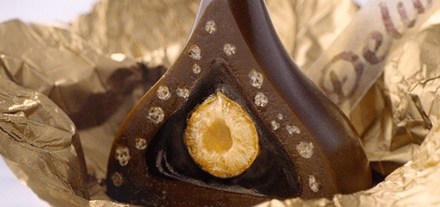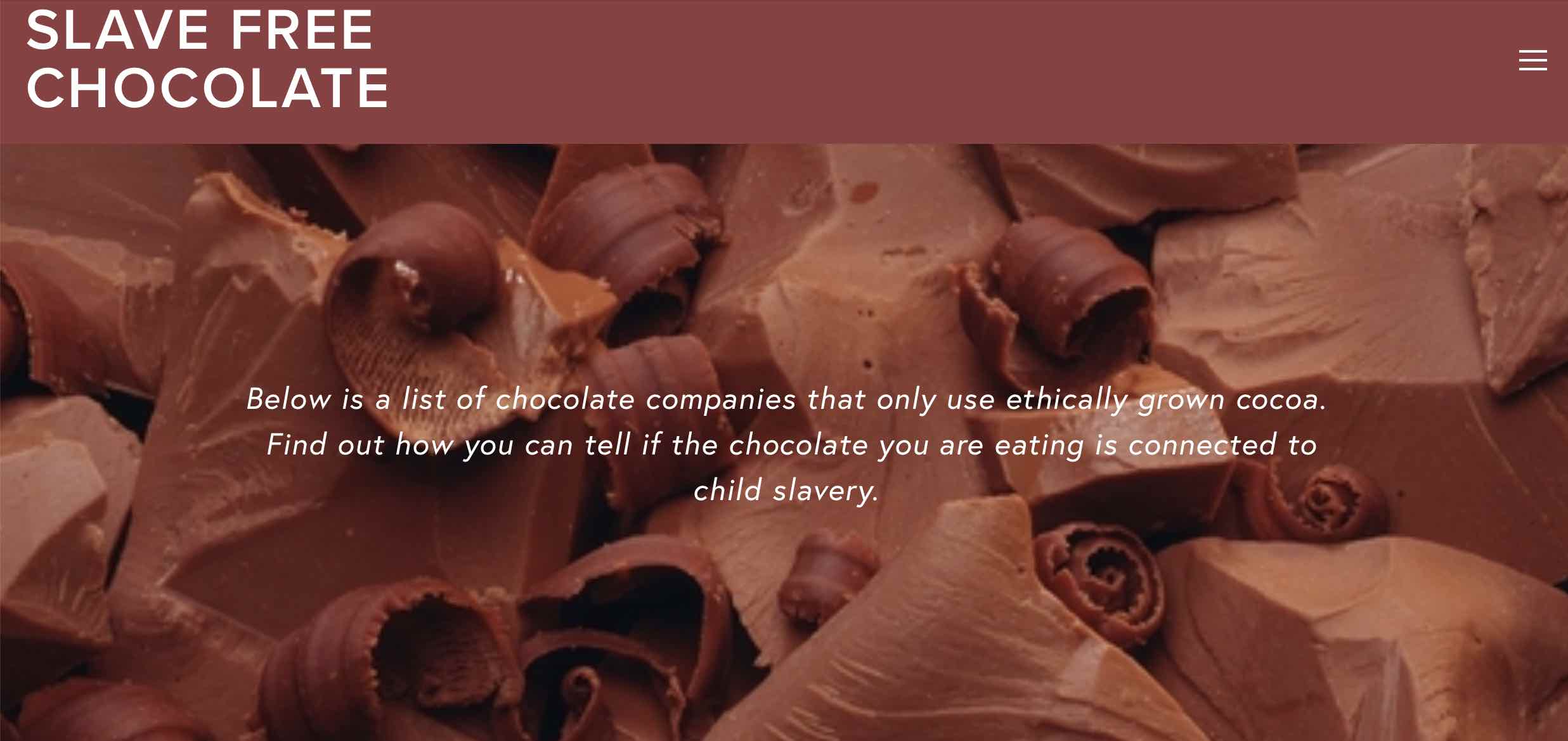First, thanks to The Cocoa Pod shop for tweeting this article from Food Dive about Hershey’s new Kisses Deluxe on November 3, which brought it to my attention. I immediately re-tweeted, because it seemed important news. But it wasn’t until this morning that I had the chance to sit down and think about what Hershey’s latest move signifies for that company, or for the craft chocolate industry.
In contrast to my first reaction, which was “It’s doomsday for Hershey to mess with their icon,” my more measured thoughts are that this is positive for all. I have not yet tasted one of these Deluxe Kisses (I will soon; they went on sale across the US yesterday), so I can’t speak to their quality. But the image of one of these things sliced in half—a cross section of this Kiss’s novel innards—was immediately compelling to me.
I looked before I read, and my first (wishful) thought was that this was a Kiss stuffed with fig and speckled with enormous crystals of sea salt. I was looking on the small screen of my phone, and something in the shape reminded me of my favorite confection: Lauren Adler’s Chocolopolis Anise Ganache Fig.
No such luck, however. Twice as big as a normal Kiss, this one houses a whole roasted hazelnut. The flecks in the outer chocolate layer are wheat crisps if you’re shopping in China, rice crisps if in the US, according to USA Today.
Putting anything new into a Kiss is an unusual move for Hershey, which has not typically embraced innovation around their best-loved product. The company has made only a few significant changes to the Kiss during its one hundred eight year history (it launched in 1907). As quoted Aamer Madhani’s article, “‘It took 55 years just to change the color of the foil,’ Adam Borden, senior associate manager for Hershey’s Kisses told USA TODAY. . . . ‘Then it took another 38 years to put something inside the milk chocolate.’”
Hershey’s “tried-and-true” mantra has been documented by others, notably Joël Glenn Brenner in The Emperors of Chocolate and Lawrence L. Allen in Chocolate Fortunes. In both excellent books, Hershey seems to come out the worse for keeping tradition instead of innovating. Given the company’s history, I doubt that Kisses Deluxe signal a fresh new vanguard Hershey, leading the chocolate pack with revolution and novelty. But I do think Hershey is learning from market changes, both global and US national. And that is a good sign for everyone, no matter where you stand in the chocolate industry.
On the global level, as Madhani reports, Kisses Deluxe were first created for consumers in China, where they were a huge ($100 million) success. Catering to chocolate tastes beyond what Milton Hershey himself created for the US is the implicit drive behind the whole craft chocolate industry. So I applaud any attempt by Hershey to go beyond its signature brand flavor (Deluxe Kisses are supposedly less sweet than the usual ones), introducing its millions of customers to something different to what they would typically expect from chocolate. And for the US market, let’s not discount the company’s surprising decision to make the center a hazelnut—not a peanut or an almond, which are by far the more embraced nuts across the US candy spectrum.
But I also read this as a response to the pressures of the US craft market on the chocolate multi-nationals. People who make and consume craft chocolate may never eat a Hershey Kiss Deluxe—may never even look at them on the store shelf. But that does not mean Hershey is not watching what they eat, and that would be, under the broadest label, the so-called “premium” chocolates: chocolates that are innovative, surprising, and cost more than a Kiss.
In any other company (or at least, any company that innovated more regularly than Hershey), this would be a holiday marketing gimmick and no more (Kisses Deluxe will sell in the US only through Valentine’s Day). But I think this is something more, and that is wider recognition, from a company that dominates the confectionery market, that craft chocolate is changing our tastes. To remain a leader in this industry, Hershey or any chocolate company will have to maintain thoughtful originality around products, supply chains, and ethics. At least on the first count, this is a welcome move from the company that really did give the US its first taste of chocolate.




